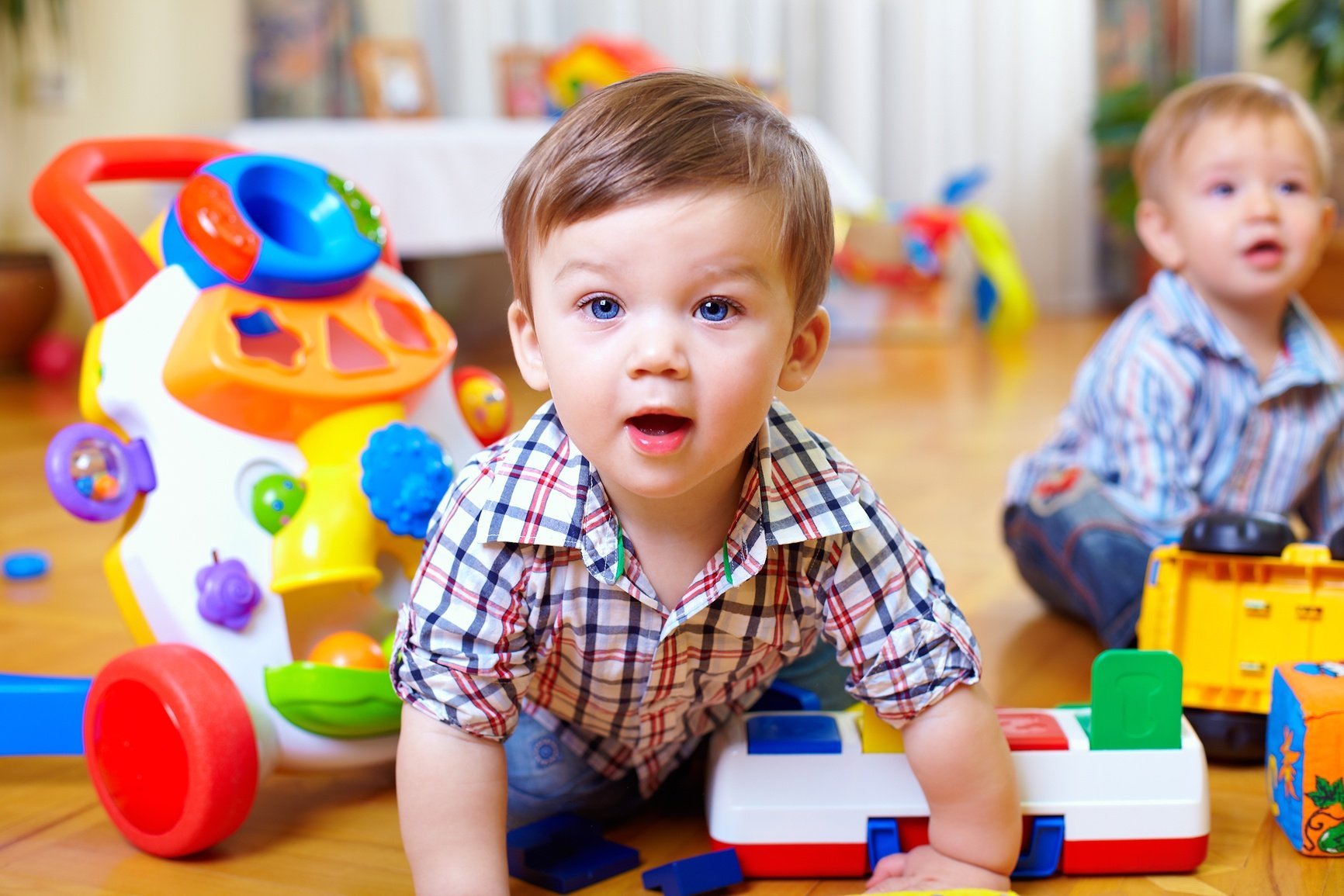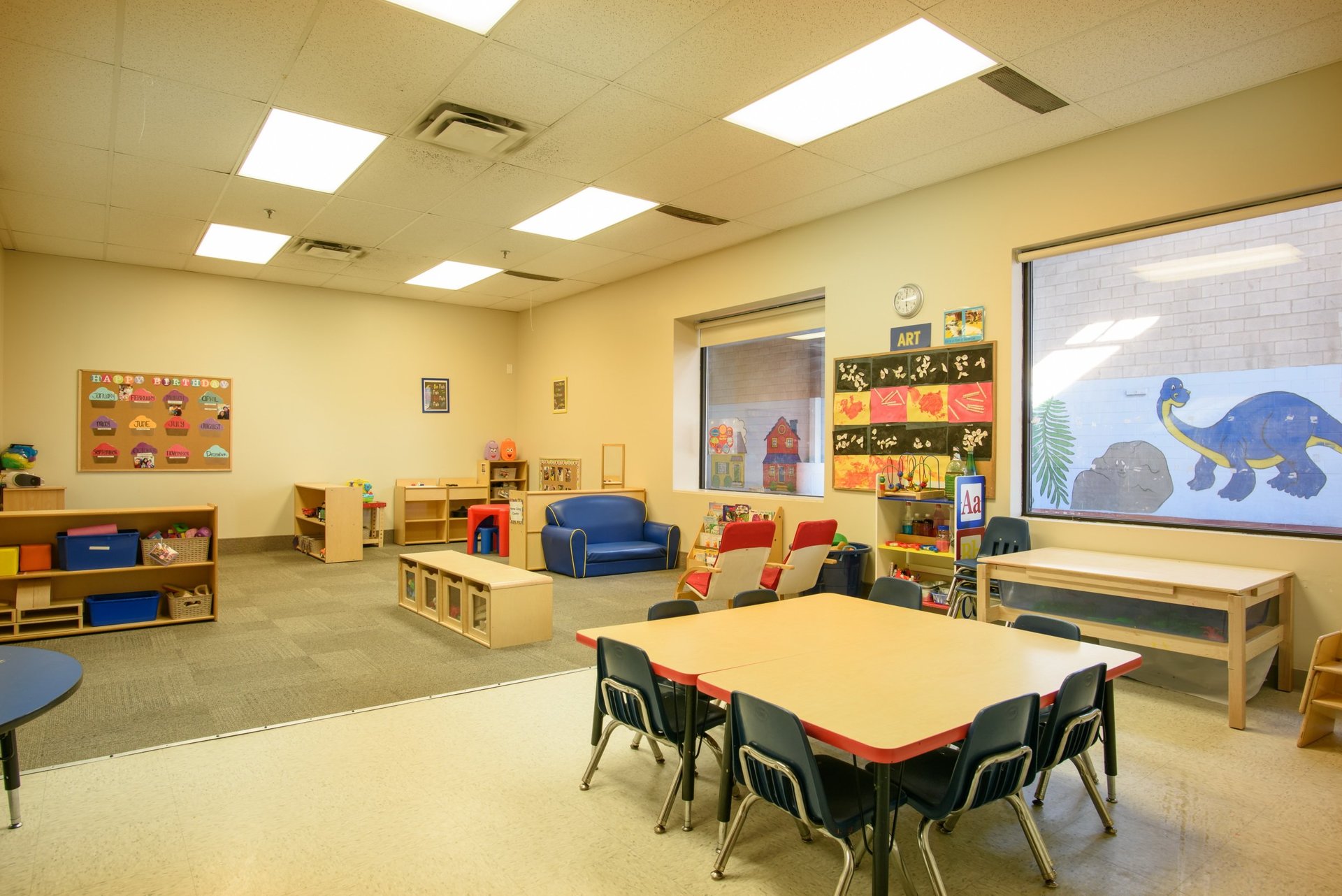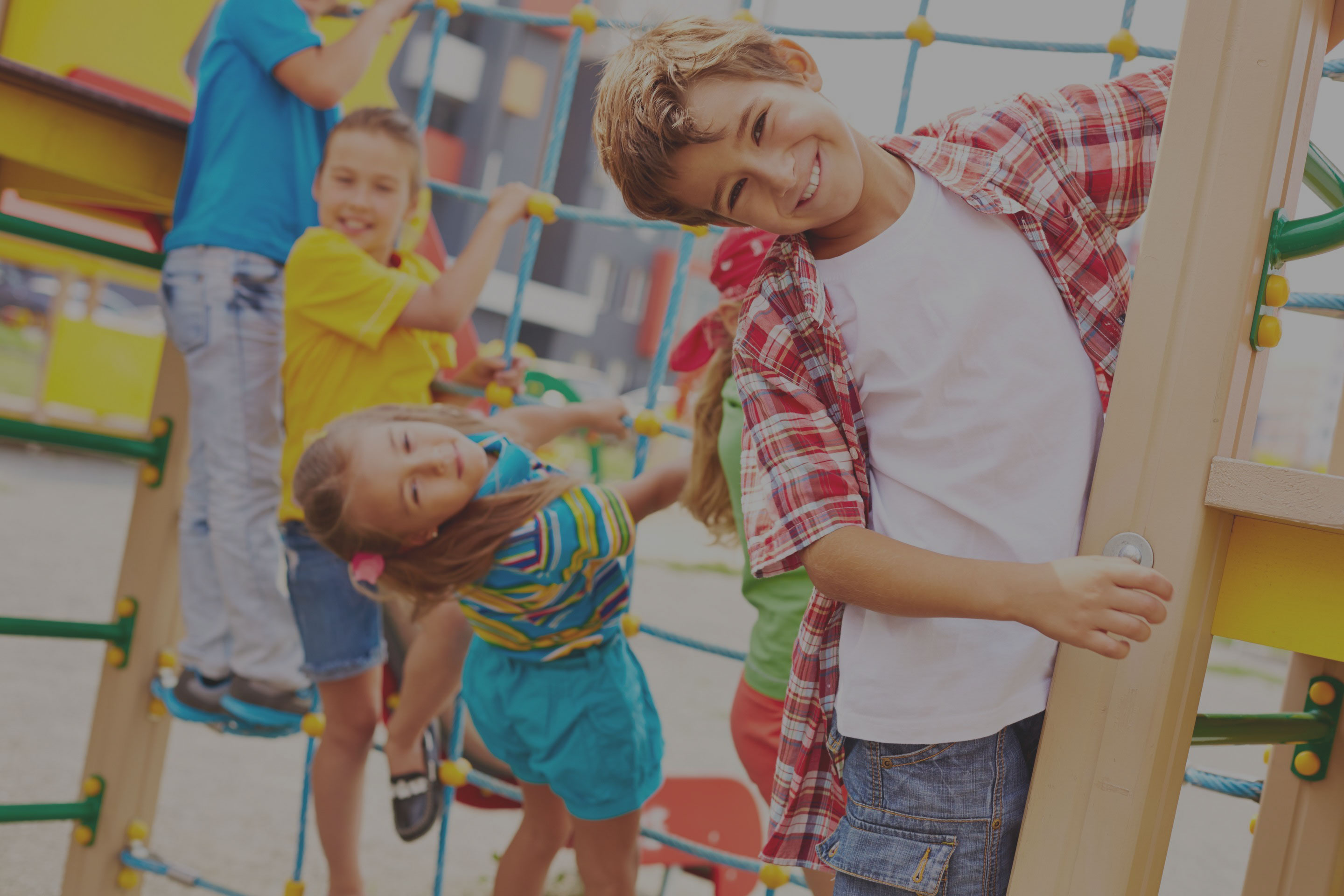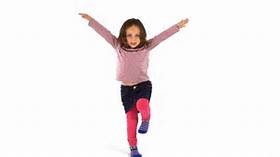How Parents Can Prepare their Child to Return to Daycare
How Parents Can Prepare their Child to Return to Daycare
As parents prepare to return to work and as daycare reopens, it is critical that parents prepare their child to return to daycare. With children being away from daycare and routines for months, we know it will be difficult for both parents and children to get back into the routine. We have create some tips to help parents to make the transition as smooth as possible as you get ready to return to daycare.
The week before returning to daycare:
- Talk about your child’s teacher, friends and people they know at school.
- Show pictures of people at the daycare and talk about fun times. You can look at pictures of your child on the HiMama app and any class photos. Ask your child if they remember the names of the people in the pictures.
- Be excited and positive. Try not to show any anxiety or fear about returning to daycare. Even if you may be feeling a little anxious – try to stay positive. Your child will feed off of your emotions.
- Try to use positive language when talking about what you can and can’t do at daycare. For example, instead of saying “don’t touch your friends” , you could say “ We can give air hugs like this“
- Drive by the daycare and stop in front of it. Point out that you will be going back very soon.
- Give them answers to the questions they ask rather then information overload which can make them feel anxious. Sometimes less information is better.
- Show them how to wash their hands well. For 20 seconds and use soap and water.
- Try to follow the daycare schedule routine with wake up time, naps and lunch time.
The day before returning to daycare:
- Tell your child you are excited to go to work and see your own friends (even if you are working from home)
- Pack your backpack with items to bring to daycare.
- Talk about PPE. Show them what a mask looks like and put one on the doll and on yourself. For toddler, play peek-a-boo with the mask.
- Tell them that a teacher will be waiting for them at the door because they are so excited to see them. If possible, let them know that you won’t be going into the classroom.
- Bring in a family photo if you have not already done so (something recent)
- Get a good night’s rest.
First Day Back:
- Keep in close communication with your teacher (messaging)
- Have trust and confidence in your educators – they are there to support you
- IN ALL CASES – Give it some time – you will see that each day will prove to be better.
For more information about what you can expect as daycare re-opens, click here.
What to Expect as Daycare Re-Opens
What to Expect as Daycare Re-Opens
As we get ready to return to daycare at our Oakville and Mississauga locations, we know that the decision to return to daycare is a difficult one for parents. We can truly empathize with parents with respect to dealing with the daily unknowns and fears related to this pandemic. As we start to transition to a new normal, we are providing information about what daycare will look like for you and your child.
The first thing you should know is that we have been working hard over the past several weeks leading up to this announcement to prepare the daycare for a safe opening. We have been deep cleaning, adjusting our processes and procedures and training staff on the new protocols.
In our role as educators of young children, physical distancing from children is not always possible. Therefore will take every precaution with respect to screening, PPE, staff training, cleaning, sanitizing and altering or enhancing existing practices.
What will daycare look like? To start, we will have smaller class sizes (10 people total – 8 kids and 2 teachers) and those 10 people will stay together for the entire day everyday. Screening will be done on each person that enters the facility (both staff and children). This is a key part of the process to ensure that all staff and children are healthy (free from illness symptoms) when they enter the centre, have not travelled and have not been in contact with a sick person to give everyone peace of mind.
With the new classroom size and some creative thinking, we have some ideas to promote individual activities while still allowing interactions between classmates. There will be plenty of space to allow more then 1 child to work in an interest area. We have created some individual bins with art materials and sensory so that children can have their own set of materials to use and minimize high touch items that can not be cleaned as easily. In more high risk situations, such as eating and sleeping, we have created more space between children, water bottles will be separated with a divider tray and all items will be labelled and cleaned daily. We have set up a toy rotation system to allow items to be switched out to provide interest and variety while allowing extra sanitizing each night. Our goal is to provide a safe and happy bubble where children can thrive but parents can rest assured and go about their work day confidently.
You may wonder if children will be able to socialize and be comforted in this environment. The answer is YES! We know that this is a difficult transition for children who have been away from daycare and routines for close to many months. We will comfort them and keep them busy so they are learning and thriving. Children will also be able to interact with their classmates. They will play with their small group of friends and enjoy some much needed social interaction.
As we welcome new families, transitions will look different but we are committed to transitioning both returning and new families with a loving and empathetic approach. We believe that by following all of the precautions, screening and altering our procedure that we can indeed achieve all our goals. We will use our HiMama app to communicate with parents daily and show them pictures, videos and message them about their day to alleviate any concerns and still be informed about what children are learning and how they are doing. We are continuing to smile because we know how important we are to you – we have a big responsibility – we love our job, and the children and families we serve.
We look forward to it getting back into our routine and seeing all the children and parents in the coming days, weeks and months!
Stay safe and know that we are truly in this together. ~ Air Hugs all around!
E is for Engineering
At Alpha’s Discovery Kids Preschool and Daycare, we understand the importance of educating children using a wholistic approach. Engineering is a key component of our STEAM (Science, Technology, Engineering, Art and Math) program which is one of our four pillars of learning. You may be wondering how we teach young children engineering skills. This may seem like an abstract concept that young children wouldn’t understand. So first, let’s define engineering and then discuss how we teach those skills to young children.
Engineering is the application of scientific knowledge to solving problems in the real world. Therefore, people use engineering skills to solve problems, which may include learning how things work and building things that we will solve problems in our daily life. So, if you look at it that way, young children are constantly in the process of engineering. They are so inquisitive and they are constantly trying to figure out how things work. It starts with simple tasks, like opening a closed cupboard door or moving a car up and down a ramp. Every activity that they are participating in, is giving them the opportunity to problem solve. One day, these simple little tasks will teach them to solve bigger problems. Teaching children how to think creatively and learning to solve problems prepares them for the future.
Engineering is the process by which young children discover how the things in their world are built and how they work. Whether it is building a block tower, or it is exploring a simple pendulum, engineering is a natural part of everyday, early learning.
Now that we understand what engineering is and how it relates to young children, how do we foster the development of engineering skills. Exploration is a major component when it comes to engineering, so we need to give children opportunities to explore. The ability to freely explore something is important while avoiding too many rules and instructions. This will help the children to solve a problem creatively and lead to understanding and insight.
Another way to foster engineering skills is to let the children play. As parents and educators, we can be over-protective of this generation of children as we try to eliminate any area of risk for them. We fear the slide is too high, that they shouldn’t climb up it. We begin to instill fear in them that isn’t there. Let them play in mud and make mud pies, let them play with sticks and blocks and shovels. Let them be kids and explore. Playing in mud won’t hurt them, it only creates opportunities to problem-solve, create and imagine.
At Alpha’s Discovery Kids, we provide planned activities to the children every day that builds on engineering skills. We provide specific materials to let them build and engineer with. It is important to have a plan and purpose, as well as have the freedom to play and explore. It is okay to create challenges for young children to engineer and build.
Here’s some things you can try at home. Give your child a basket of blocks and challenge them to see how high they can create a tower. Gather rocks outside and create a rock tower. Provide different shapes and sizes of these materials so that they learn what order to place the items in, from biggest to smallest, from fattest to thinnest. It is important to allow the space needed for when the tower does fall, or they make it too tall or too wide.
Provide children with random material in a basket and see what they can build and create. You can put paper, glue, scissors, random craft supplies and let them create and imagine. It is important to ask thought provoking questions along the way. The key is to have one-on-one conversation with your child throughout the engineering process.
Visit our curriculum page for more information about how we incorporate engineering into our four pillars of learning through STEAM curriculum. We have truly developed an exceptional program that focuses on the child as a whole. We believe that language, literacy, STEAM and mindfulness can provide children a path for continuous growth.
Minimize First Day of Kindergarten Jitters
Minimize First Day of Kindergarten Jitters
Minimize First Day of Kindergarten Jitters – By Susie Beghin
Every September a new wave of children is introduced to the Kindergarten classroom. This transition from home or daycare to the elementary school system can be easy and seamless when you take the right steps. There are many things parent and the daycare professionals can do to help ease the transition.
Preparedness for Kindergarten is not about the knowledge your child has—whether they can read, or even if they know their letters or numbers—it’s about how much independence and confidence they have and how well socialized they are. These key skills play a role in how well they might adapt to the classroom. Helping your child develop these characteristics can be accomplished at home and daycare leading up to the first day of school. But how can parents and caregivers do this?
At Alpha’s Discovery Kids we provide our families with a readiness checklist, but parents can develop their own, based on their child’s needs and abilities. There is a consensus amongst experts of five key things you can do to prepare your child for this important life event.
1. Encourage Self-Care
• Teach self-help skills like dressing—learning zippers and buttons, shoes and boots, coats, mittens.
• Teach them how to put things into, and take them out of, a backpack, and how to use all types of lunch containers. Teach them to tidy up their things and keep track of their belongings.
• Ensure your child is capable when addressing their bathroom needs. In Kindergarten they will not get assistance, and this could result in a child being sent home.
2. Follow regular routines
• Make sure there is a consistent bed time that provides your child with enough sleep to ensure they are attentive and productive in the classroom. In general, the consensus is 10 hours a night for Kindergarten-aged child.
• A regular morning routine is also critical. It is recommended you get your child used to waking up at the same time every day, getting dressed and eating breakfast, all with plenty of time before they have to be ready to leave for school without being rushed.
• Build free play time into your daily schedule, both with parent involvement and without. Individual playtime helps develop creativity and allows the child time to decompress without any expectations or influence from others.
• Part of having a routine is having a schedule and keeping it. At home it would be easy to give in if your child wants to dawdle through lunch. A school schedule is much more rigid, and if 30 minutes is allotted for eating, then that’s what they will get. Teach your child to transition from one activity to another when it is time. Continue reading “Minimize First Day of Kindergarten Jitters” below.
3. Encourage Socialization
• Register your kids in parent-free activities. Art classes, dance, and sports are all excellent opportunities to create a sense of independence and comfort. They will learn that their caregivers will always come back for them.
• Participation in team sports is a great way for children to learn cooperation and teamwork, which will really help them in a school setting, both in the classroom and on the playground.
• Children who regularly attend preschool and daycare are automatically socialized due to their group environment and don’t really need other types of group activities until Kindergarten.
4. Develop healthy habits
• Eat healthy foods. Teach your children about the difference between healthy food and treats (sometimes food).
• Start the day off with a healthy breakfast to make your child is alert and ready for learning.
• Drink lots of water to keep the brain and body hydrated to optimize learning. Keep fruit juice as a sometimes food, and minimize soda consumption as much as possible.
• Get plenty of sleep. Experts recommend 10 hours of sleep a night, but if your child needs a nap to recharge when they get home from Kindergarten, especially in the early months, don’t discourage them. If the nap interferes with their ability to get to sleep at night, limit the length of the nap.
• Make sure your child has regular physical examinations and is up to date with their immunizations. Remember, many school systems will suspend attendance if the immunization record is not up to date.
5. Talk to your child about Kindergarten
• Visit the school. Take advantage of all events offered that allow you to bring your child to the school—open houses, Meet the Teacher events, and orientation sessions.
• Travel the route your child will be taking to school, whether they’re walking, driving, or taking the school bus. If you’re walking, learn how long it will take you to get to school, and plan that into your routine. Give your child the opportunity in advance to look at all the interesting things along the route so they will be less distracted when school actually starts. If taking the school bus, drive the route with them so they can develop familiarity with their surroundings and will be able to recognize landmarks when they are nearing their bus stop. Talk about school bus safety—staying seated when the bus is moving, keeping track of their belongings, and only leaving the bus stop with their designated caregiver.
• Take them to the school to play in the playground. Learn some playground games like hopscotch or Four Square so they will not feel lost or overwhelmed during those first few recesses.
• There are some really good books you can borrow from your local library that explore the kindergarten transition. Read them with your child and encourage them to ask questions.
Parents also have expectations of their child when entering Kindergarten, but it’s important to remember that all children reach milestones at different times and not to measure your child against anyone else. It doesn’t matter if your 4 year old can’t read yet. Work with them at home to support their preschool’s efforts, learning letters, numbers, colours, and shapes.
Whether a child has stayed home with parents or other caregivers or has attended a daycare or preschool, there are steps you can take to lessen your child’s anxieties related to starting school. Following these suggestions will help ease the transition into the structured, often overwhelming world of kindergarten. With love and support, everything will be fine for everyone involved.
Thanks for reading: Minimize First Day Of Kindergarten Jitters
Thanks for reading: Minimize First Day of Kindergarten Jitters
Signs your Child is Ready for Potty Training
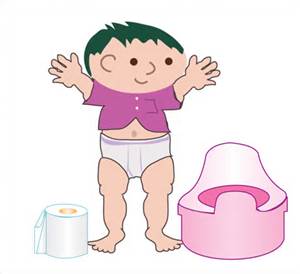 Signs your Child is Ready for Potty Training
Signs your Child is Ready for Potty Training
Signs your Child is Ready for Potty Training
How do you know if your child is ready for potty training? How young is too young or how old is too old? This is a question we are often asked at Alpha’s Preschool Academy and Child Care Centre in Mississauga on a regular basis.
As child care professional with quite a bit of experience, we can honestly say there is no definitive answer. Every child is amazingly unique and develops in their own time. Even if you parent your child in the exact same way at the same time, as in the case with twins, they still won’t be the same!
At our daycare in Mississauga, we always work with our families to create a stress-free potty training routine to best suit the child and the care and love that is needed during this big transition. There are certain readiness signs to watch out for which we will highlight in this article.
Physical Signs
Your child should be able to walk steadily with confidence and co-ordination. Keep track of your child’s wet diapers and how often they are wet throughout the day. Observe how long your child can stay dry. If they are able to keep it dry for over 2 hours, that is a good sign that they are physically ready to start the potty training process. Also, ensure that your child has regular bowl movements with predicable times.
Behavioural Signs
If our daycare has taught us anything, it is definitely that behaviours are always changing with so many factors such as : age, environment, new care providers, mood etc. These are just general suggestions of signs to look for.
Your child should be able to sit for up to 5 minutes continuously. Your child should be able to pull pants up and down on their own. If not, don’t hesitate to encourage your child to learn that skill whenever you have an opportunity to do so. Some kids don’t like to feel wet our soiled and will be uncomfortable. If that’s the case, then take advantage of that as an opportunity to start potty training! If your child takes an interest in using the washroom, encourage them to do so. If your child is attending daycare and they show interest with the other children using the toilet, that is also a good sign. If they are always asserting their independence this is a great motivator to encourage potty training!
Cognitive Signs
Your child needs to be able to communicate with you to let you know that they need to use the toilet. If your child is able to follow simple directions and is talking in a few words and phrases, they are ready to learn the words to identify “pee” or “poo” which will help with the potty training process.
Resisting
If your child resists using the toilet and seems to show no interest in the potty training process, this is not something that can be forced. You want the process to be successful and if you start with resistance, the process will not go well. Listen to your child and look for the key physical, behavioural and cognitive signs indicated above before you start the potty training process.
At Alpha’s Discovery Kids Preschool and Daycare in Mississauga, we watch for the signs and keep open communication with families about the child’s readiness to use the toilet. We work with our families to ensure the child’s success.
Chores! What can kids do to help?
For most people, chores are a hassle and getting your children to help out might as well be the end of the world! It doesn’t have to be that way. How can we involve our kids in chores without making it seem like a lot of work? In this article, we have some tips that can help build a household where everyone helps out so that there is time for both work and play! Read more ›
Cooking with Kids
Cooking with Kids
Cooking with Kids – The foodie revolution is in full swing—but why should grown-ups have all the fun? From cooking shows starring “junior” chefs to kitchen toys, kids are discovering the culinary arts…and having a blast doing it! Read more ›
The Power of Positivity when Communicating with Kids
Communicating With Kids
“STOP DOING THAT!” “YOU DON’T LISTEN!” “I CAN’T BELIEVE YOU RIGHT NOW!” Some of the things that we as parents say to our children when we are frustrated or upset with them can affect their self-esteem and their opinion of you. Our words are so powerful so we as parents and educators must choose them wisely and try to use positive language as much as possible. Read more ›
Physical Literacy – what is it?
What is Physical Literacy?
Physical Literacy sounds like reading a story while doing a cartwheel; however, it is a term that is both critical to learn and vital for early development for our children. So what is Physical Literacy? Read more ›
We love you too but when it’s time to hit the road……..Alpha’s Awesome Road Trip Tips!
Everyone needs a little holiday now and again and while Alpha’s Preschool Academy loves every member of our toddler, preschool and daycare programs, we know it’s important for families to spend time together too. Often, this means a summer road trip. (Insert groan here, LOL!) If it’s time for your family to take a little road trip adventure vacation, whether to Grandma’s house or Gander, Newfoundland, we’ve got you covered with some helpful travel tips tailor made for children of all ages! Read more ›

